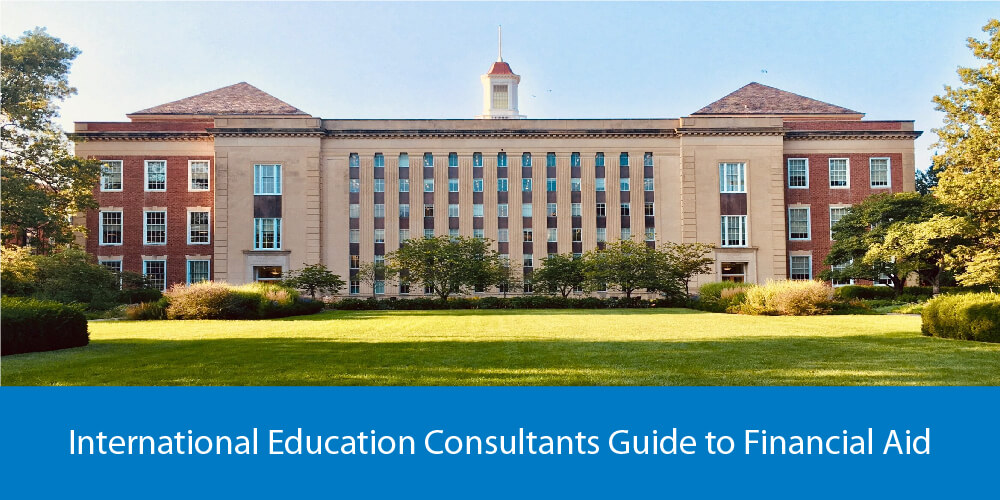
Financial aid comes from a variety of sources and in a variety of forms. Ultimately, all this money is meant to cover your college expenses, which include tuition and fees, room and board, transportation, and personal expenses.
Your total cost of attendance will vary depending on where you're planning on going to school. You can get more detailed information on all these costs through our International Education Consultants in India guide to college expenses.
So what counts as financial aid? There are three main types of aid you should be aware of:
#1: Grants are sums of money you don't have to pay back. They're usually awarded based on financial need. Grants can come from the federal government or your school.
#2: Loans are sums of money you borrow to fund your education. You pay back these sums after graduation, in addition to paying back interest charges. In the end, you pay back more than you borrow. Loans can come from the federal government (such as Direct loans) or a private lender, such as a bank.
#3: Like grants, scholarships are sums of money you don't have to pay back. They can come from private sources (such as corporations) or your school. They can be awarded based on merit only or based on a combination of merit and financial need. Athletic scholarships and academic merit scholarships are sometimes awarded by schools to extremely competitive applicants. These awards are given to entice students to accept an offer of admission; financial need isn't necessarily considered in these cases.
Now that you know about the different forms of financial aid, we can talk about what aid types are more helpful than others.
What Is "Bad" Financial Aid?
I define bad financial aid as aid that's a good short-term solution but burdensome in the long term.
Financial aid packages are less appealing when they offer the majority of their financial aid in the form of loans. What this means is that you're still responsible for those college expenses—you'll just have to pay them after you graduate instead of right now.
You're also responsible for interest charges, which are especially high when loans have high rates and/or are unsubsidized.
Private Loans
Private loans are not included in schools' financial aid packages because the loan lenders are banks, not the schools. If your out-of-pocket cost is too high (i.e., if grants/scholarships don't cover enough of your college expenses), you might consider turning to student loans to cover the difference.
Private loans might be viable financial options for some students. I'm not saying that private loans are evil and that no one should ever take out student loans from banks. They should, however, be the last option you consider after grants, scholarships, and low-interest/subsidized loans.
A "Bad" Financial Aid Package
Less desirable financial aid packages will contain mostly loans, particularly high-interest loans. In these cases, a school can't or won't cover a student's unmet need, so the onus to find funding is put on the student. What this usually means is that the student has to take out loans to cover the cost of his or her education.
The average student debt for graduates of four-year bachelor's programs in the US is about $28,950. For some students, even this average debt amount might seem unmanageable.
What Is "Good" Financial Aid?
I define good financial aid as aid that's a helpful and sustainable financial solution for both the short and long term. Good financial aid enables you to afford the education you need without hindering you professionally, financially, or personally after you graduate.
Here are examples of aid that fit this definition:
Grants
Any free money is good money. Because you don't have to pay back any money you receive from grants, this award type won't hinder you in any way after you graduate.
Like I mentioned earlier, grants can come from both public and private sources. Check out our Pell Grant guide to learn more about federal grant options.
Scholarships
Scholarships are similar to grants. Because they're essentially free money, you won't have to worry about repayment at any point.
The major difference between grants and scholarships is that scholarship applicants are almost always evaluated on merit, even if the scholarship is need-based.
To get started with your scholarship search, check out our guides to top awards for high school juniors and high school seniors.
Low-Interest Loans
The bad news: loans aren't as fun as grants or scholarships. You have to pay back the money + interest.
The good news: loans can still be viable and manageable solutions for students who can't afford a school's net price after any grants or scholarships.
What makes a loan a good financial option? Low-interest rates, primarily. Many federal loan programs have low-interest rates, including Direct loans. You might be able to get private loans with low-interest rates if you have good credit. Generally, though, federal loans are better financial options.
Learn more about federal Direct Subsidized and Direct Unsubsidized loans with our guides.
Subsidized Loans
Subsidized loans can save you some serious money in the long run because they don't accrue interest while you're in school and for six to 10 months after you graduate. See exactly how much money you'll save with a subsidized versus the unsubsidized loan.
A "Good" Financial Aid Package
Ultimately, good financial aid packages are made up of a healthy percentage of grants and/or scholarships. If loans are included, they'll be low interest (5% or less) and might even be subsidized. They'll cover some of your financial needs and maybe throw a scholarship or grant your way.
The best financial aid packages will cover all your financial needs. What this means is that the school itself funds your education after any federal grants without making you take out loans.
In the next section, you'll get a list of schools that claim to meet all their students' financial needs - the best kind of financial aid.


